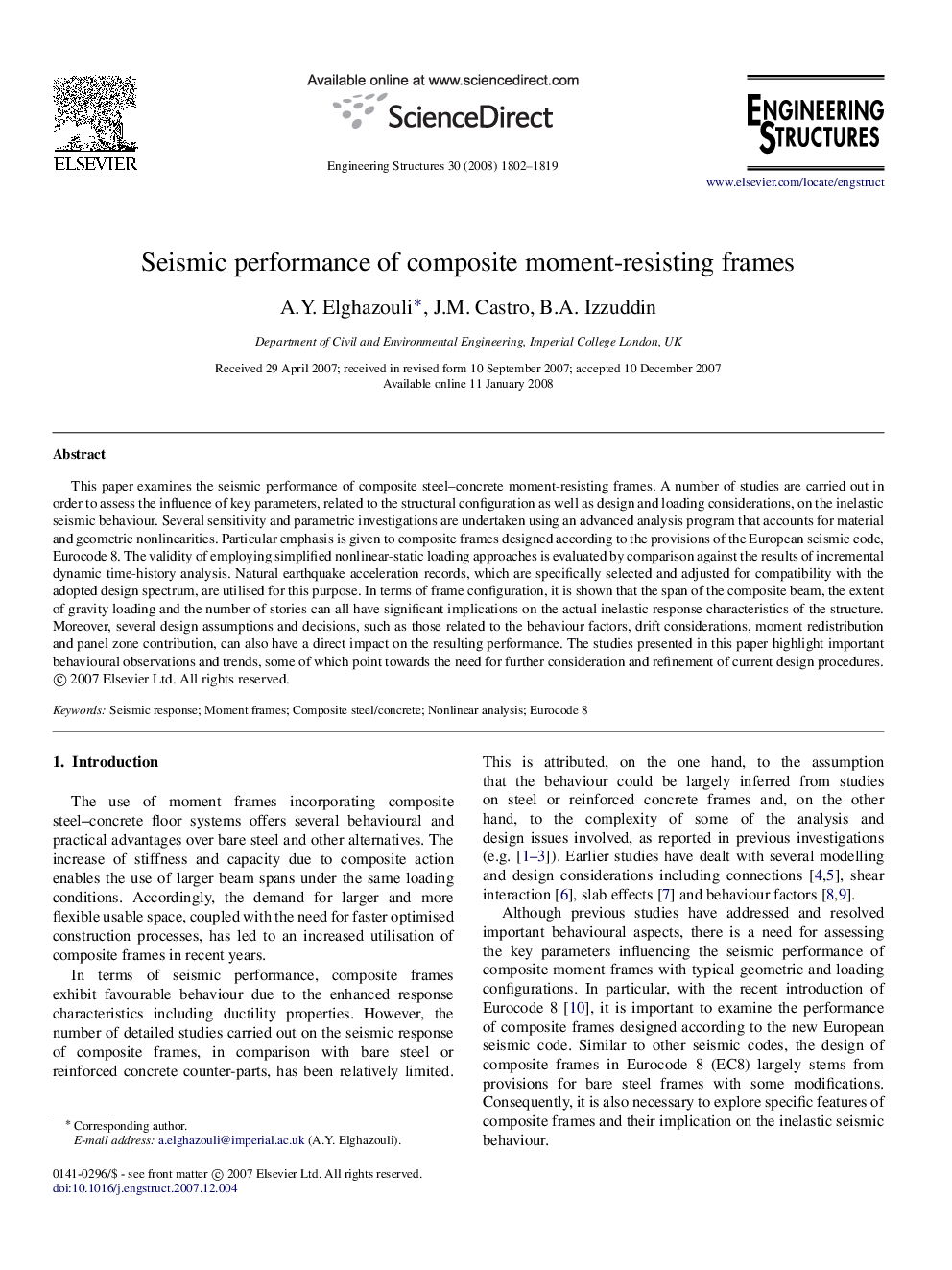| Article ID | Journal | Published Year | Pages | File Type |
|---|---|---|---|---|
| 269241 | Engineering Structures | 2008 | 18 Pages |
This paper examines the seismic performance of composite steel–concrete moment-resisting frames. A number of studies are carried out in order to assess the influence of key parameters, related to the structural configuration as well as design and loading considerations, on the inelastic seismic behaviour. Several sensitivity and parametric investigations are undertaken using an advanced analysis program that accounts for material and geometric nonlinearities. Particular emphasis is given to composite frames designed according to the provisions of the European seismic code, Eurocode 8. The validity of employing simplified nonlinear-static loading approaches is evaluated by comparison against the results of incremental dynamic time-history analysis. Natural earthquake acceleration records, which are specifically selected and adjusted for compatibility with the adopted design spectrum, are utilised for this purpose. In terms of frame configuration, it is shown that the span of the composite beam, the extent of gravity loading and the number of stories can all have significant implications on the actual inelastic response characteristics of the structure. Moreover, several design assumptions and decisions, such as those related to the behaviour factors, drift considerations, moment redistribution and panel zone contribution, can also have a direct impact on the resulting performance. The studies presented in this paper highlight important behavioural observations and trends, some of which point towards the need for further consideration and refinement of current design procedures.
